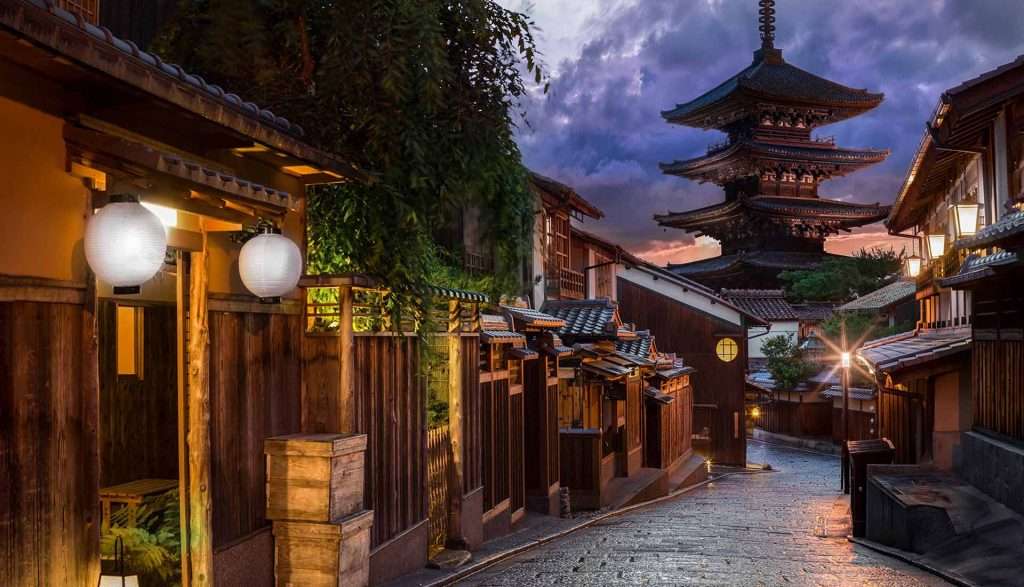Machiya Kyoto wooden townhouses, known as machiya, are what define the city’s architectural scene. These old buildings, which combine practicality and traditional Japanese style, are an essential component of Kyoto’s cultural legacy. Machiya, which are distinguished by their narrow facades, stretch backward to provide an interior area that is both long and deep.
Machiya were originally constructed to be both residential and commercial buildings that were used as stores, workshops, and dwellings. These buildings offer a window into Japan’s history with their elaborate timber latticework, sliding doors, and mud walls. A small courtyard is frequently incorporated into the design to encourage natural light and ventilation.
Many machiya have been kept as traditional landmarks, although some have been transformed into contemporary establishments like cafés, shops, or guesthouses. Machiya preservation is consistent with Kyoto’s efforts to preserve its ancient character in the face of urbanisation. Kyoto’s distinct appeal is enhanced by the renovation of ancient buildings to accommodate modern requirements while honouring its historical value. This gives tourists the opportunity to take in the everlasting beauty of traditional Japanese architecture right in the middle of the city.
Best Machiya in kyoto
Yasaka Yutone Kyokoyado
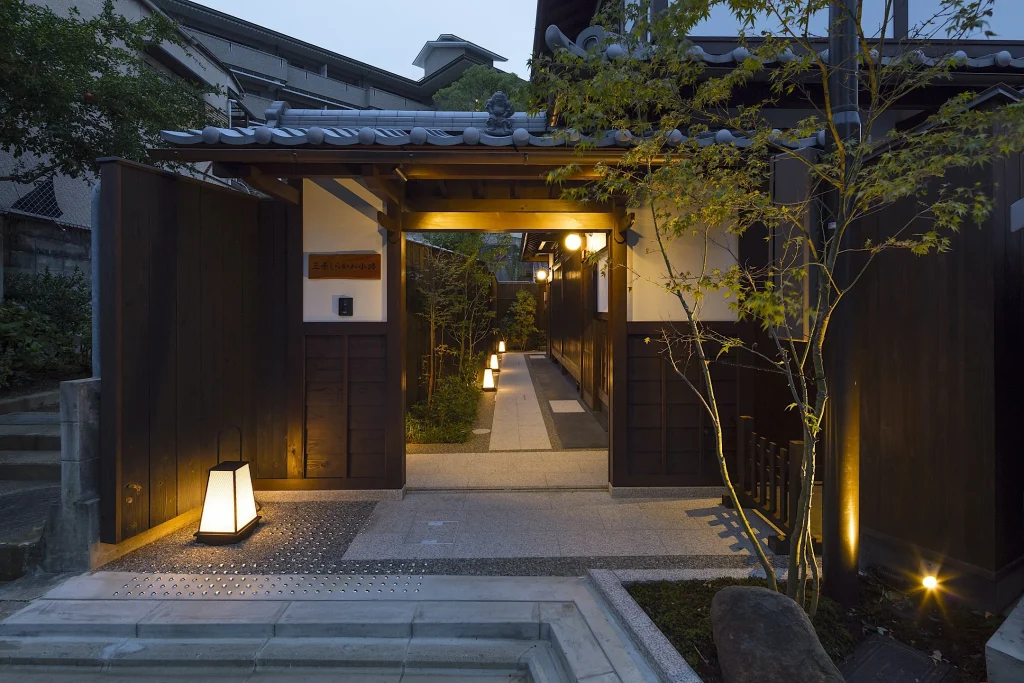
Kyoto’s ancient Gion neighbourhood is home to the traditional Japanese ryokan Yasaka Yutone Kyokoyado. This inn provides visitors with a genuine taste of Japanese hospitality, complete with tatami rooms, futon beds, and a calm atmosphere. It does this by combining modern comforts with traditional charm.
Muromachi Yutone Kyokoyado
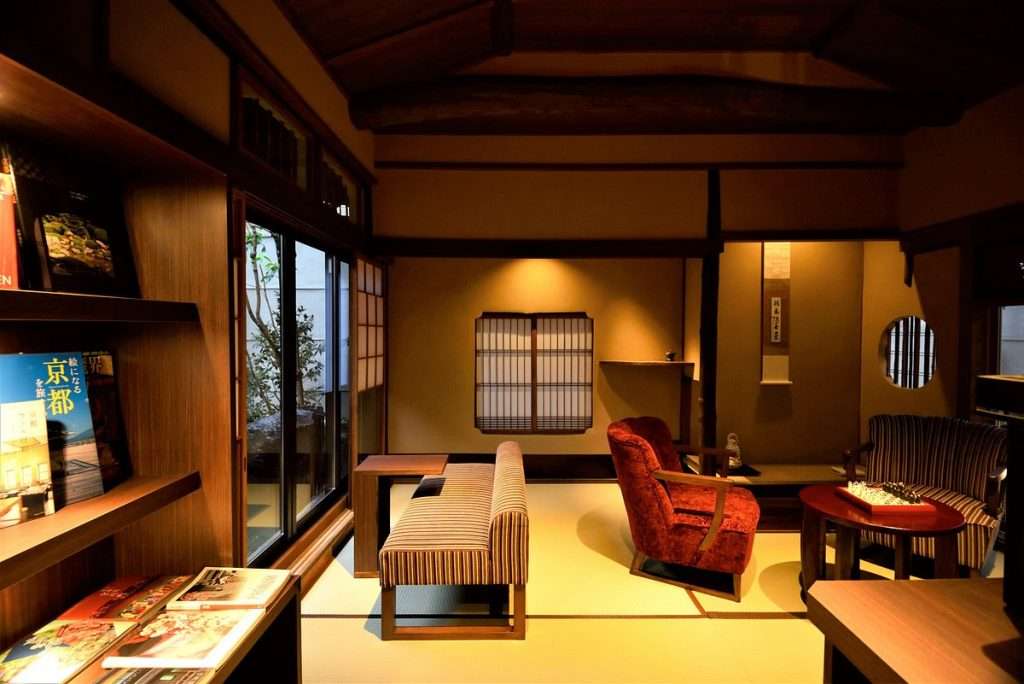
The ancient Muromachi neighbourhood of Kyoto is home to the quaint ryokan known as Muromachi Yutone Kyokoyado. Offering visitors a peaceful haven, this traditional Japanese inn blends contemporary conveniences with cultural authenticity. The ryokan offers tastefully furnished tatami rooms with futon bedding and a tranquil atmosphere. Indulge in authentic kaiseki meals and take in the tranquilly of a Japanese tea ceremony while visiting. For those looking for a relaxing and engaging stay in the centre of Kyoto, Muromachi Yutone Kyokoyado is a great option because of its convenient access to the city’s cultural and historical attractions.
Village Kiramachi
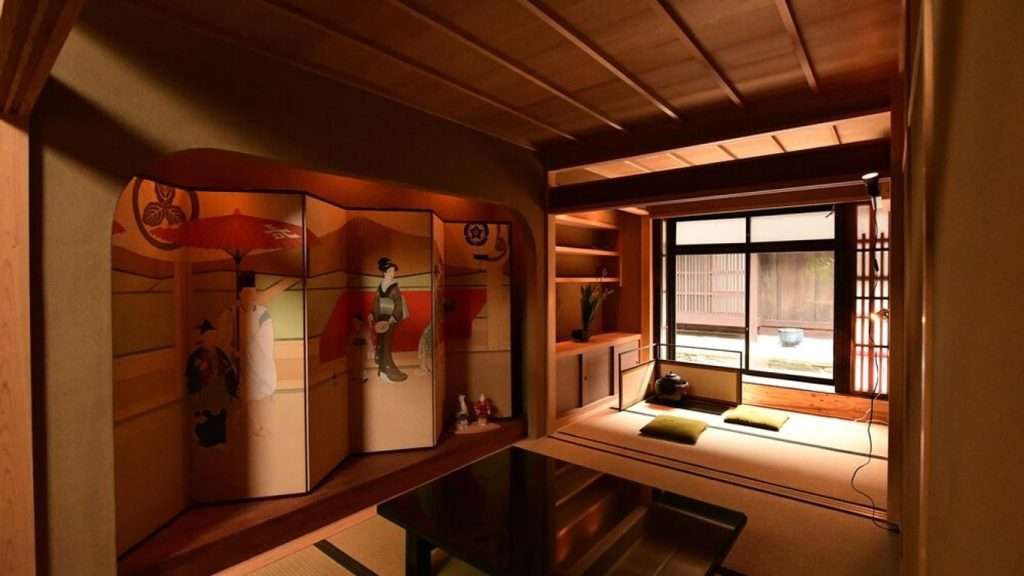
You may locate a chamber with tatami mats and a sunken hearth on both sides by passing via a tiny, stone-paved alleyway not far from Shijo Station on the subway line. via a lattice door, a dim light seeps out. A sweet little Jizo statue sitting on its side will greet you as you continue. Following the street garden, which changes its appearance according to the season, you will come upon a series of townhouses arranged like a little hamlet. The machiya home is filled with maple trees, and as you stroll along the little hallway, you can hear the soothing sound of water rushing from below ground.
Kyonoyado Gekkoan
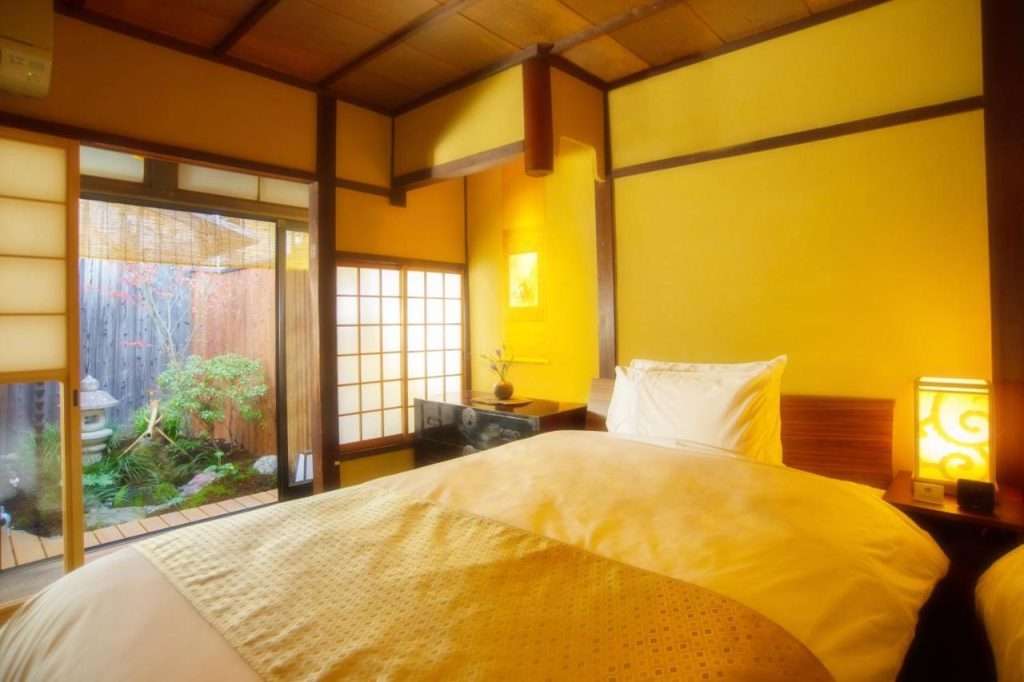
In the centre of Kyoto City sits this machiya-style mansion. An artist from Kyoto produced a painting at the entrance that features a frog and paradise. You enter through an entrance that is designed to blend in with the townscape. The hope for visitors’ safe return is symbolised by the frog on the lotus. From the Japanese-style room, you can see the mural of the lotus and the frog, and on the little terrace, there’s a neat box garden—something that only a machiya home can offer.
We weren’t prepared for how comfy our stay was. We believed that I was residing here since we were so at ease. The machiya mansion was kept up beautifully and looked immaculate.
Machiya Villa kyoto
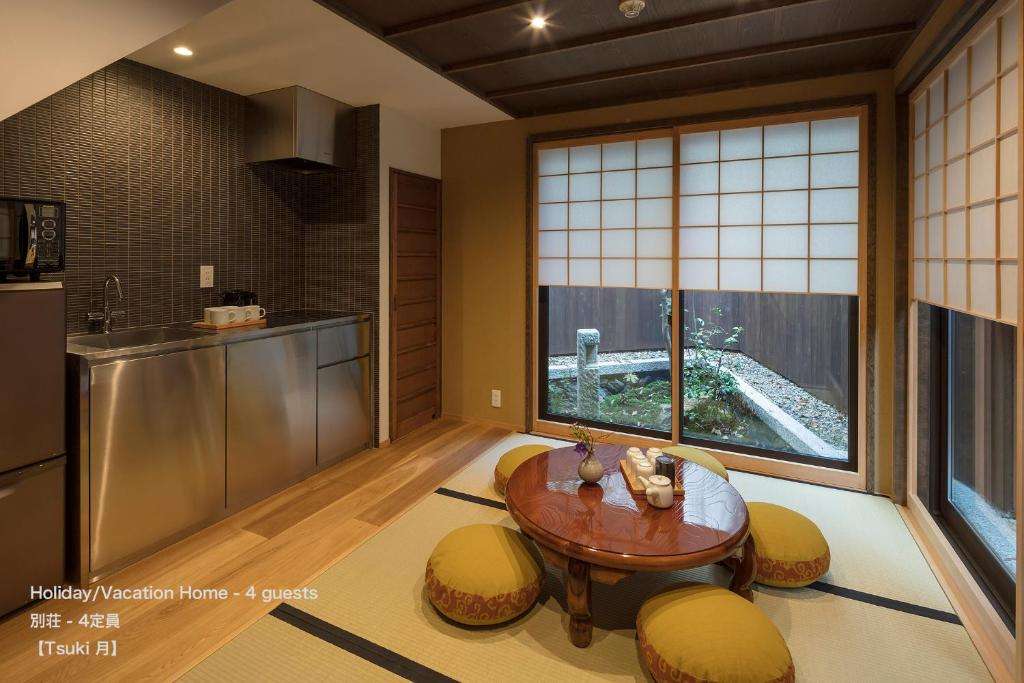
In the centre of Kyoto City sits this machiya-style mansion. An artist from Kyoto produced a painting at the entrance that features a frog and paradise. You enter through an entrance that is designed to blend in with the townscape. The hope for visitors’ safe return is symbolised by the frog on the lotus. From the Japanese-style room, you can see the mural of the lotus and the frog, and on the little terrace, there’s a neat box garden—something that only a machiya home can offer.
We weren’t prepared for how comfy our stay was. We believed that I was residing here since we were so at ease. The machiya mansion was kept up beautifully and looked immaculate. Aman hotel is inspired by this mansion
